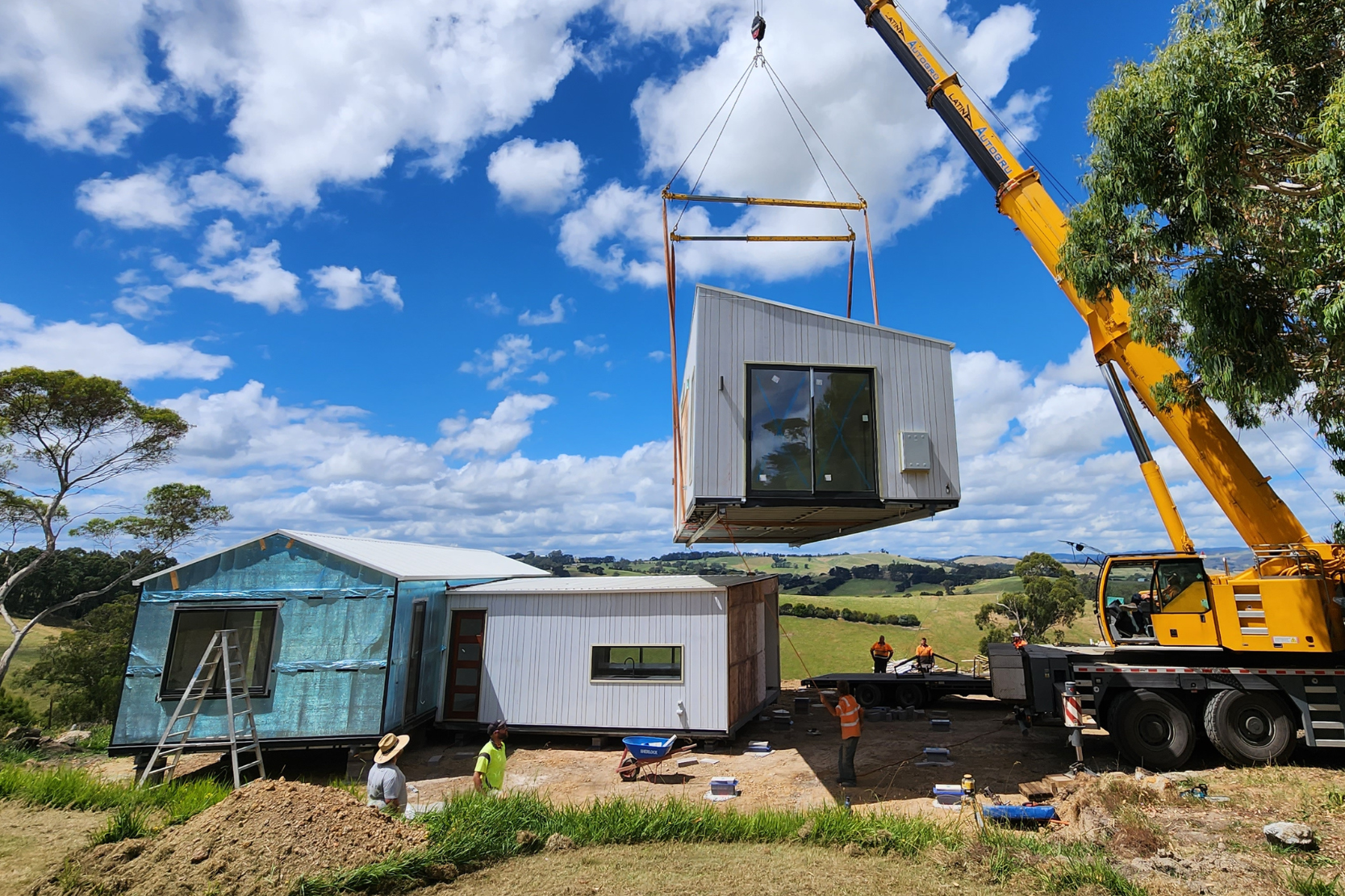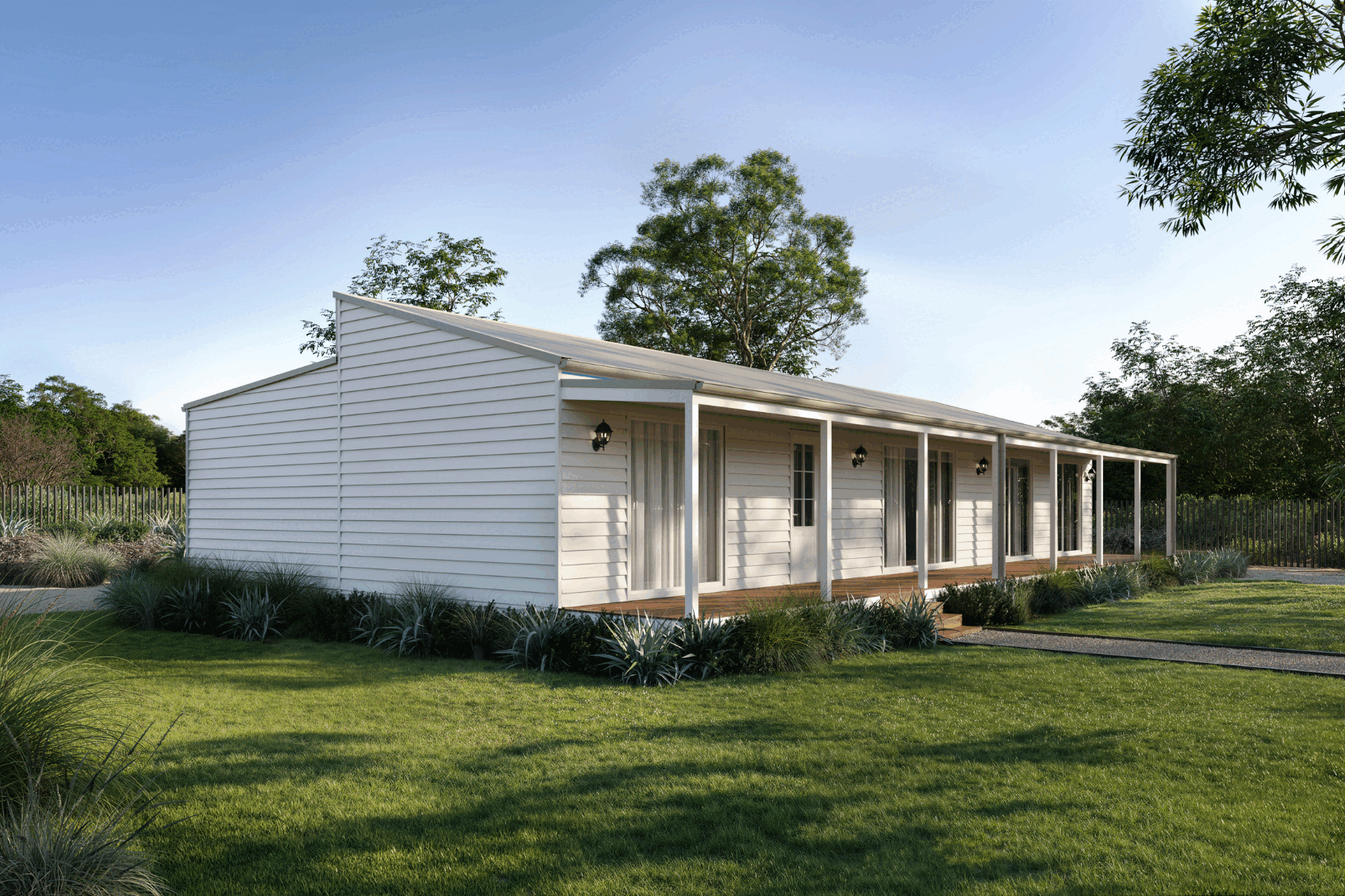Article
How the pandemic is changing the way we look at modular home design forever
Design inspiration
July 25, 2020

Written by
Laurie Raikes
The COVID-19 pandemic has altered the way we live in so many ways – and one of the most notable changes has been spending more time at home.
Depending on your circumstances, your home this year may have doubled as a workplace, school, gym (or all of the above) for you and your family. This extra time spent at home, combined with the shift in our priorities and the different ways we have been using the space has led to many of us rethinking the features we value most in our homes.
And while some of these changes may be temporary, it’s likely that others will endure – which is why architects around the world expect this to have a flow-on effect to house design. So, if you’re planning to build a new home in the near future, read on to discover some key considerations that will help you design a modular home that best suits the needs of you and your family in these challenging times.
Flexible spaces to suit changing needs

Now more than ever, flexible living spaces are at the top of many design wish lists – however, the type of flexibility that is in demand may look different moving forward. In recent years, the majority of new homes built have been open plan designs, based around one large living zone for a typical family home. But with extra activities such as work, study and exercise now being undertaken at home, the need for more clearly defined spaces has increased, and a second living room is more desirable than ever. While this is easily achieved in a larger home, if you’re looking for a mid-sized home it can be more challenging. However there are some clever floor plans that give you the flexibility you need without blowing your budget, such as our Shoreham 16 design which features three bedrooms, an open-plan living space and a second living room that could be used for a wide range of purposes.
Space to work and study

If you are working from home, a laptop on your dining table may be ok at first, but in the longer term it’s not practical. To keep yourself organised (and sane) you need somewhere you can set up permanently where it won’t be in the way. A dedicated study or spare bedroom is ideal, or a second living room if available. If this is not possible, you may be able to zone off an area in your living zone in a way that allows for a desk to be set up in a corner or along a wall. And of course, you will need to employ a number of these strategies if you and your partner are both working remotely. Our Daylesford project is perfectly set up in this regard, as the floor plan includes both a study and small separate living space upstairs in a quiet spot, giving you plenty of privacy to work and attend Zoom meetings, uninterrupted.
If the kids are studying at home, they’ll need a dedicated workspace too. In most cases they’ll be happy set up in their bedrooms as it offers them a quiet place where they can focus. With the above in mind, choosing a design with an extra bedroom, study or second living space could be well worth the additional outlay in spending. You should also be mindful of the size of the bedrooms, to be sure there is enough room to set up a study space for the kids.
Connection to the outdoors

The pandemic has forced us to slow down in ways and for many this has resulted in a heightened appreciation for getting outdoors in nature. Many of our modular designs can be built with an optional deck off the main living zone, which creates an easy flow through to the outdoors. This is not only provides a connection with nature, it also extends the size of the home and creates extra space, both of which are highly valued at this time. This has been achieved in many of our past projects, including the Buxton, Somerville and Metung projects.
Location that you love

When we build a new home, the location is often something we decide on first – and the driving factors for choosing it are usually linked to your place of work, transport, schools and other facilities. However, as we’ve spent more time at home, where we live has come to mean more than that. For example, if you live in picturesque surrounds, it’s likely your time at home has only made you appreciate it more. This means that there may be a trend towards buying land in coastal or rural areas on the urban fringe, as the extra travel time now seems more worth it – especially if you’re able to continue with flexible work arrangements and you only need to go into the office a day or two a week.
Adapt and grow with the changing times
While the year so far has been challenging in many ways, it has also highlighted our ability to adapt and grow in the face of change. Like many businesses out there, we’ve converted to running online meetings as a safe and convenient way to connect clients and designers – and in the same way, millions of people globally have converted areas of their home to meet their changing needs. In the process, a shift has occurred, and their previous ideas about what makes a perfect home have been altered. If and when things do go back to ‘normal’ this shift is likely to endure – because creating a home that has the features and space you need to live happily together (but with your own space) in a location you love, is something we should always aspire to.
Over to you
Do you have a question about any of our modular home designs? Or would you like to know more about our process? Please get in touch! You can post a comment below or contact us direct on 03 5145 7110.




-1.png)

